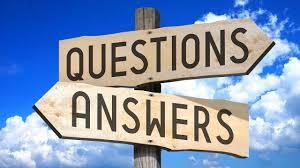What are the historical roots of the current tensions between NATO and Russia, and how do they influence contemporary geopolitical strategies? By Hugo Keji

The tensions between NATO and Russia have deep historical roots that date back to the end of World War II and the beginning of the Cold War. These tensions have evolved through various phases, each influencing contemporary geopolitical strategies. Here’s a brief overview:
1. Origins in the Cold War
- Post-WWII Division of Europe: After World War II, Europe was divided into Western and Eastern blocs, with the West being influenced by the United States and the East by the Soviet Union. This division was solidified with the formation of NATO (North Atlantic Treaty Organization) in 1949, which was initially created to counter the Soviet Union's influence in Europe.
- Soviet Response – The Warsaw Pact: In 1955, the Soviet Union and its Eastern European allies formed the Warsaw Pact as a counterbalance to NATO. This alliance system formalized the military and political division of Europe and set the stage for decades of Cold War rivalry.
2. The Collapse of the Soviet Union and the 1990s
- End of the Cold War: The collapse of the Soviet Union in 1991 marked the end of the Cold War, leading to a period of uncertainty in Eastern Europe. With the dissolution of the Warsaw Pact, many former Soviet states and Eastern European countries sought closer ties with the West.
- NATO Expansion: One of the most significant sources of tension has been NATO’s eastward expansion. Starting in the late 1990s, several former Warsaw Pact countries and Soviet republics joined NATO, including Poland, Hungary, the Czech Republic, and later the Baltic states (Estonia, Latvia, and Lithuania). Russia viewed this as a direct threat to its security, considering it a violation of informal agreements made during the reunification of Germany that NATO would not expand "eastward."
AfriPrime App link: FREE to download...
https://www.amazon.com/Africircle-AfriPrime/dp/B0D2M3F2JT
3. The 2000s and the Resurgence of Russian Power
- Putin’s Russia: Under Vladimir Putin, Russia began to reassert itself as a regional and global power. Putin’s government became increasingly critical of NATO, accusing it of encircling Russia and undermining its influence in the former Soviet sphere.
- Key Flashpoints:
- 2008 Georgia War: Tensions escalated when Russia invaded Georgia after the Georgian government attempted to reassert control over the breakaway regions of South Ossetia and Abkhazia. Russia’s military intervention and the subsequent recognition of these regions as independent states were seen as a challenge to NATO’s influence in the region.
- 2014 Ukraine Crisis: The annexation of Crimea by Russia and the conflict in Eastern Ukraine marked a significant deterioration in relations. Russia viewed the pro-Western movement in Ukraine and the possibility of Ukraine joining NATO as direct threats to its strategic interests. NATO’s response, which included military exercises, sanctions, and increased presence in Eastern Europe, further deepened the rift.
4. Contemporary Geopolitical Strategies
- Military Posturing: NATO has increased its presence in Eastern Europe, conducting regular military exercises and deploying troops in member states near Russia's borders. This is aimed at reassuring Eastern European members and deterring potential Russian aggression.
- Hybrid Warfare: Russia has employed hybrid tactics, including cyberattacks, disinformation campaigns, and political interference, to destabilize NATO member states and weaken the alliance’s cohesion.
- Energy and Economic Influence: Russia has used its vast energy resources as a tool of influence, particularly in Europe. Disputes over energy supplies, especially natural gas, have been part of Russia's broader strategy to assert its influence over Europe.
- Arms Control and Nuclear Strategy: The breakdown of arms control agreements, such as the INF Treaty, has raised concerns about a renewed arms race. Both NATO and Russia have updated their nuclear strategies, with Russia emphasizing the role of its nuclear arsenal in its national security strategy.
The historical roots of NATO-Russia tensions lie in the post-World War II division of Europe and the Cold War rivalry. The collapse of the Soviet Union, NATO’s expansion, and Russia’s resurgence under Putin have all contributed to the current geopolitical landscape. These tensions influence contemporary strategies, with both sides engaging in military posturing, hybrid warfare, and geopolitical maneuvering. The situation remains fluid and complex, with the potential for both confrontation and cooperation shaping the future of European security.
AfriPrime App link: FREE to download...
- Questions and Answers
- Opinion
- Motivational and Inspiring Story
- Technology
- True & Inspiring Quotes
- Live and Let live
- Focus
- Art
- Causes
- Crafts
- Dance
- Drinks
- Film/Movie
- Fitness
- Food
- Spellen
- Gardening
- Health
- Home
- Literature
- Music
- Networking
- Other
- Party
- Religion
- Shopping
- Sports
- Theater
- Wellness
- News
- Culture

